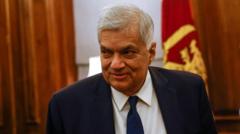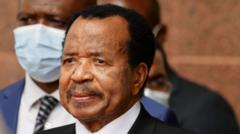SALT LAKE CITY (AP) — The Church of Jesus Christ of Latter-day Saints is preparing for a leadership transition following the death of President Russell M. Nelson. Dallin H. Oaks, a former Utah Supreme Court justice, is poised to be named the next president, in a transition largely dictated by the church's longstanding hierarchical structure.
Traditionally, the church appoints its president from the longest-serving member of the Quorum of the Twelve Apostles, creating a continuity that has ensured stability and minimized potential internal conflict. Following Nelson’s passing at the age of 101, Oaks currently leads the Quorum, which now comprises 14 members with the dissolution of Nelson’s First Presidency.
Understanding Church Leadership
The Church of Jesus Christ of Latter-day Saints operates a clearly defined leadership hierarchy, featuring a president and two counselors collectively known as the First Presidency. Beneath them exists the Quorum of the Twelve Apostles, responsible for setting church policy and overseeing business interests. Currently, all top officials within this structure are men in alignment with the church’s all-male priesthood mandate.
How is a New President Chosen?
According to tradition, the longest-serving member of the Quorum of the Twelve ascends to the presidency. This succession plan was born out of necessity in 1889 to prevent internal lobbying and ensure a smooth transition in leadership. The church has adhered to this protocol consistently since then, with each presidency change occurring only after the passing of the previous president.
The Role of the President
The church’s president is viewed as a prophet and leader who interprets doctrine and manages church functions. This role oversees substantial financial holdings and an extensive portfolio including universities, real estate, and various nonprofit organizations. While the church is known for its discretion regarding financial matters, its investment arm's recent filings suggest a portfolio valued at $58 billion.
Presidential Tenure and Counselors
Presidents typically serve until their death, which accounts for widely varying tenures. Oaks, now next in line, has been a member of the Quorum since May 1984 and is expected to select two counselors from the same governing body once he assumes his role. This selection process reflects the church's historical practice, although it does not guarantee advancement to the presidency for previous counselors.
Choosing New Apostles
New members of the Quorum can emerge from various backgrounds, primarily those already engaged in lower-level leadership positions within the church. Recent appointments have included individuals from diverse professional backgrounds, helping inject representation into the church’s leadership in line with its global membership base.
The Role of Women in Leadership
Although women play critical roles within church organizations, leadership remains predominantly male-dominated. The top female leaders oversee programs for women and girls under the Relief Society but operate within a structure where higher leadership ranks are exclusively male.
}





















